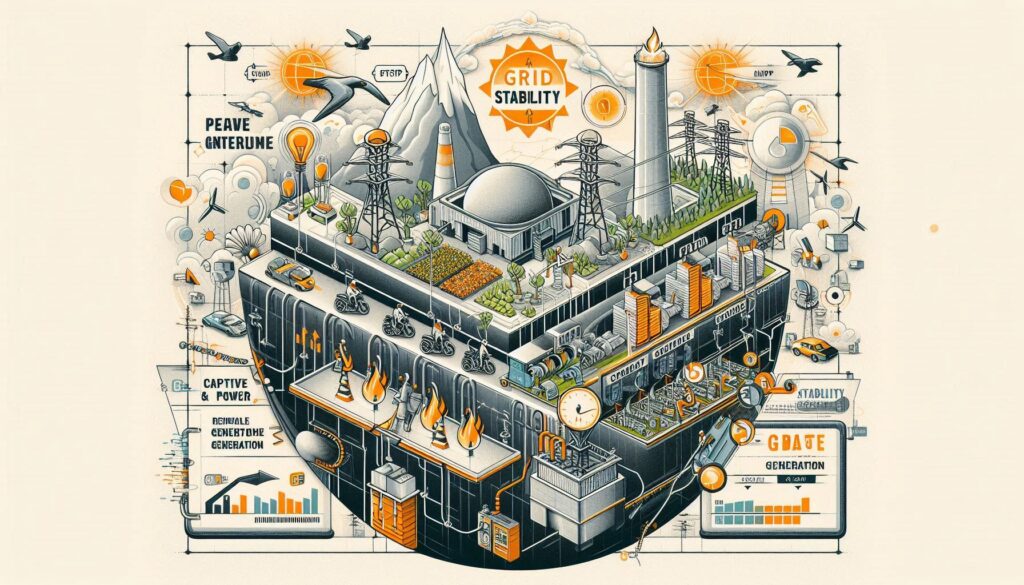
The Need for a Regulator and Its Role in Today’s Energy Sector
The energy landscape is rapidly evolving, with emerging technologies and changing consumption patterns reshaping the way we generate and use power. In this dynamic environment, the role of a regulator is more critical than ever. From ensuring energy efficiency to maintaining grid stability, regulators play a pivotal role in steering the sector towards sustainability and reliability. Let’s explore the need for a regulator and its present-day role through three key perspectives.
1. Energy Efficiency in the Age of Solar Power
With solar energy emerging as the cheapest form of power—costing around ₹1 per unit when Levelized Cost of Energy (LCOE) is considered over 30 years—it is crucial to maximize its benefits. Solar panels come with a 25-year guarantee, making them an attractive investment. However, the efficiency of energy utilization remains a concern. This is where regulators step in.
Why Energy Efficient Pumps are Necessary:
Even with low-cost solar energy, inefficient energy usage can lead to wastage and grid imbalances. Energy-efficient pumps can optimize the consumption of solar power, ensuring that we harness every unit of energy effectively. Regulators can:
- Mandate energy efficiency standards for pumps and other equipment.
- Encourage innovation and adoption of efficient technologies through incentives.
- Monitor and enforce compliance to maintain uniform standards across the industry.
By promoting energy efficiency, regulators help maximize the economic and environmental benefits of solar power.
2. Renewable Purchase Obligations (RPO) and REC Trading: Driving Renewable Adoption

Renewable Purchase Obligations (RPO) and Renewable Energy Certificates (REC) were introduced as part of the regulation in 2010 to promote the adoption of renewable energy. RPO mandates that distribution companies and captive consumers purchase a certain percentage of their energy from renewable sources.
Role of REC Trading:
REC trading acts as an incentive mechanism for entities that exceed their renewable energy targets. It allows them to sell surplus certificates to those who fall short, creating a balanced market. Regulators play a key role by:
- Setting and revising RPO targets to align with national energy goals.
- Ensuring transparent and efficient REC trading platforms for better market accessibility.
- Monitoring compliance to avoid manipulation and ensure genuine renewable adoption.
By regulating RPO and REC trading, regulators stimulate renewable energy investments while maintaining a balanced and competitive energy market.
3. Reviewing DSM and Supporting Captive Generation in Andhra Pradesh

Demand Side Management (DSM) is essential for balancing supply and demand, reducing peak load pressures, and enhancing grid stability. In Andhra Pradesh, captive generation plants have proven to be reliable sources of power, especially during peak demand periods.
Why Support Captive Generation?
Captive generation plants stabilize the grid by reducing dependency on external power sources. They offer:
- Reliable backup during peak demands, enhancing grid resilience.
- Cost efficiency for industries relying on consistent power supply.
- Reduced transmission losses, as power is generated close to the consumption point.
Role of the Regulator:
- Reviewing and optimizing DSM policies to encourage efficient energy use.
- Promoting incentives and subsidies for captive generation plants to enhance grid stability.
- Ensuring fair grid access for captive generators, balancing their contribution with grid safety.
By strategically supporting captive generation and revisiting DSM policies, regulators can enhance grid stability and energy security in Andhra Pradesh.
Conclusion: The Indispensable Role of the Regulator
In conclusion, the energy regulator is not merely a watchdog but a strategic enabler that shapes the future of energy. By promoting energy efficiency, driving renewable adoption through RPO and REC mechanisms, and supporting grid stability with captive generation, regulators ensure a balanced, sustainable, and resilient energy ecosystem.
As technology continues to evolve, so will the role of the regulator—adapting to new challenges, fostering innovation, and safeguarding consumer interests. The journey towards a sustainable energy future begins with strong and visionary regulatory frameworks.
